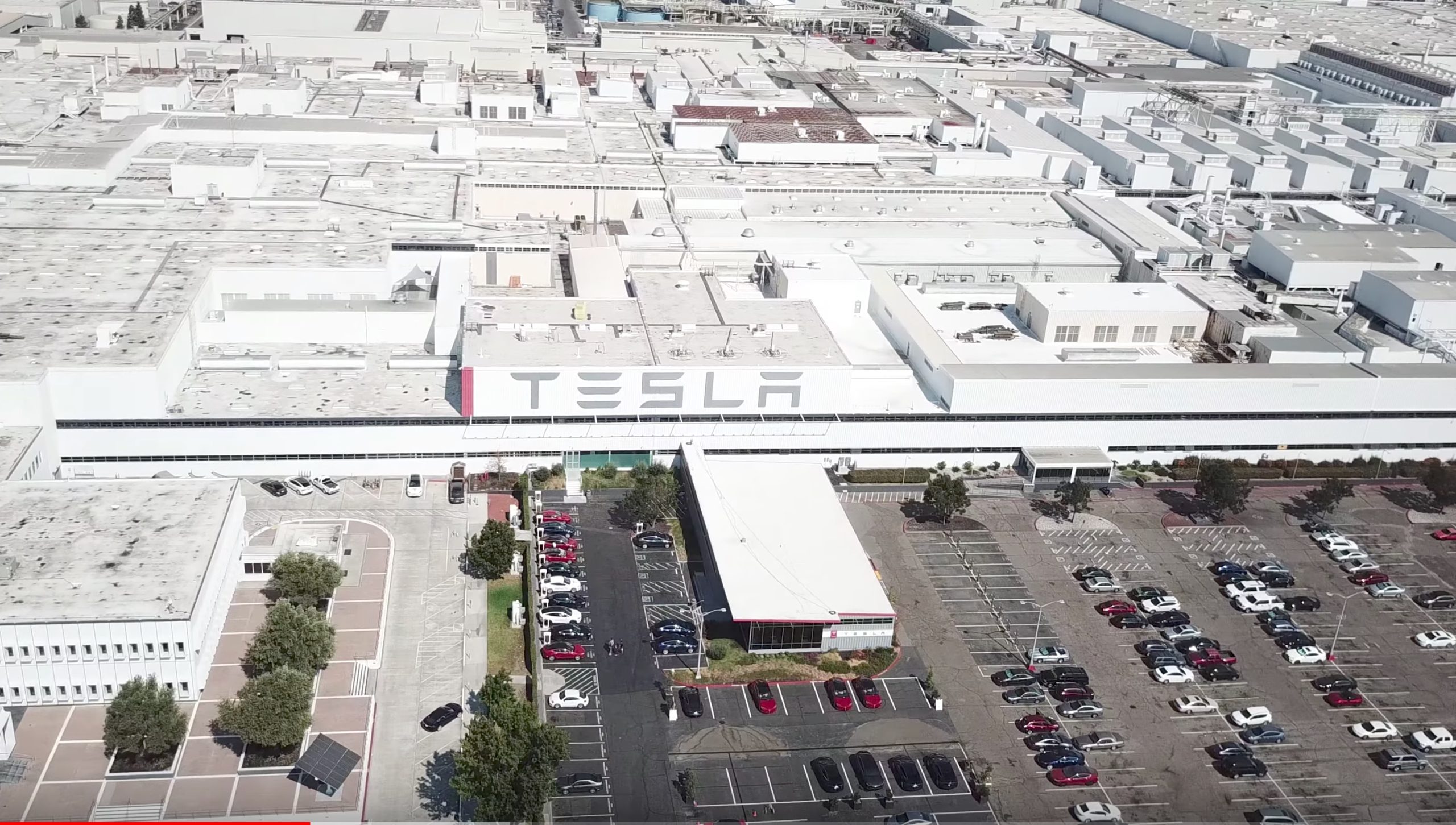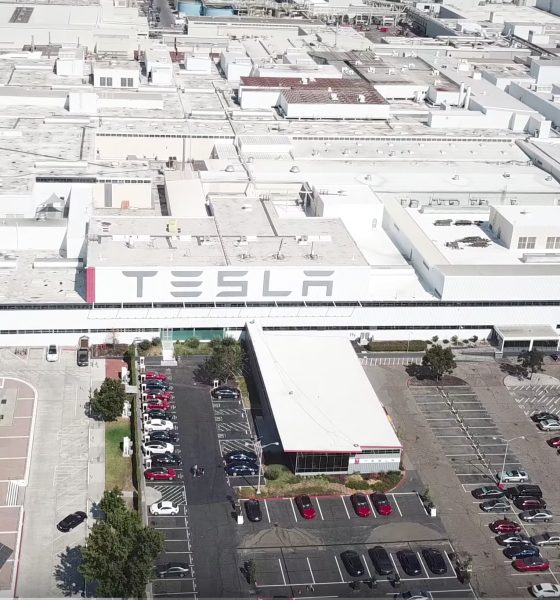

Investor's Corner
Tesla (TSLA) gets optimistic outlook from billionaire investor, Wall St analyst amid Q3 results
Tesla’s Q3 2018 vehicle production and delivery report revealed that the electric car maker set new records once more. Over the course of the third quarter, Tesla manufactured a total of 80,142 vehicles and delivered a total of 83,500 cars. Model 3 production and deliveries were at 53,239 and 55,840, meeting Tesla’s ambitious self-imposed targets. These results appear to have impressed Wall Street, with billionaire investor Ron Baron recently sharing his optimistic forecast on the company.
In a segment on CNBC‘s Squawk Box, Ron Baron of Baron Capital noted that he believes Tesla is headed towards even more growth. Baron’s firm, which has $28.3 billion in assets under management, holds 1.65 million TSLA shares. The Wall Street veteran noted that he believes Tesla’s electric car and battery storage business will be worth $500 billion each by 2030, giving the company an estimated total market cap of $1 trillion in the next 11 years.
“I think it could be a $500 billion battery business, $500 billion car business. I give that better than 50-50 chance. I think this is going to be the biggest car company. I think they’re going to have 10 million cars, 15 million cars sold per year eventually,” he said.
The billionaire investor further noted that Tesla is closing in on being self-funding, particularly since the costs of batteries are expected to drop over the next few years. Baron’s insights into Tesla’s sustainability were ultimately shared by Wall Street analyst Romit Shah from Nomura Instinet. While speaking at a segment in Bloomberg Daybreak: Americas, Shah noted that with Q3’s results, Tesla looks set to be sustainably profitable.
“I think they’re definitely sustainable. In fact, I would expect that deliveries continue to increase in the fourth quarter and in the next year. Keep in mind; they haven’t even started leasing the Model 3, which is how most consumers prefer to finance their car. They haven’t started shipping the Model 3 overseas in Europe and China. So, I still think there’s a lot of runways for them to grow,” Nomura stated.
The Nomura Instinet analyst further stated that he believes Tesla’s production and delivery figures in the third quarter might be the point where the company could break-even on a cash basis going forward.

“I think they’re there now. Whether they’re at a slight profit or at a slight loss this quarter, I think you’re looking at it here. 80,000+ deliveries a quarter should get them to break even, and in the fourth quarter, if they’re able to increase deliveries, which we think, closer to say, 100,000, then I think this company is gonna be profitable and probably sustainably so,” Shah said.
It remains to be seen if Tesla did achieve its goal of becoming profitable this Q3, though Elon Musk did state in an email to employees over the weekend that the company is “very close” to profitability. That said, the Nomura analyst’s point about Tesla having opportunities to grow the Model 3’s market stands in line with the company’s statement in its Q3 delivery and production report, which also mentioned leasing and foreign markets.
“Our Q3 Model 3 deliveries were limited to higher-priced variants, cash/loan transactions, and North American customers only. There remain significant opportunities to grow the addressable market for Model 3 by introducing leasing, standard battery and other lower-priced variants of the car, and by starting international deliveries,” Tesla wrote.

Investor's Corner
Tesla stock closes at all-time high on heels of Robotaxi progress

Tesla stock (NASDAQ: TSLA) closed at an all-time high on Tuesday, jumping over 3 percent during the day and finishing at $489.88.
The price beats the previous record close, which was $479.86.
Shares have had a crazy year, dipping more than 40 percent from the start of the year. The stock then started to recover once again around late April, when its price started to climb back up from the low $200 level.
This week, Tesla started to climb toward its highest levels ever, as it was revealed on Sunday that the company was testing driverless Robotaxis in Austin. The spike in value pushed the company’s valuation to $1.63 trillion.
Tesla Robotaxi goes driverless as Musk confirms Safety Monitor removal testing
It is the seventh-most valuable company on the market currently, trailing Nvidia, Apple, Alphabet (Google), Microsoft, Amazon, and Meta.
Shares closed up $14.57 today, up over 3 percent.
The stock has gone through a lot this year, as previously mentioned. Shares tumbled in Q1 due to CEO Elon Musk’s involvement with the Department of Government Efficiency (DOGE), which pulled his attention away from his companies and left a major overhang on their valuations.
However, things started to rebound halfway through the year, and as the government started to phase out the $7,500 tax credit, demand spiked as consumers tried to take advantage of it.
Q3 deliveries were the highest in company history, and Tesla responded to the loss of the tax credit with the launch of the Model 3 and Model Y Standard.
Additionally, analysts have announced high expectations this week for the company on Wall Street as Robotaxi continues to be the focus. With autonomy within Tesla’s sights, things are moving in the direction of Robotaxi being a major catalyst for growth on the Street in the coming year.
Elon Musk
Tesla needs to come through on this one Robotaxi metric, analyst says
“We think the key focus from here will be how fast Tesla can scale driverless operations (including if Tesla’s approach to software/hardware allows it to scale significantly faster than competitors, as the company has argued), and on profitability.”

Tesla needs to come through on this one Robotaxi metric, Mark Delaney of Goldman Sachs says.
Tesla is in the process of rolling out its Robotaxi platform to areas outside of Austin and the California Bay Area. It has plans to launch in five additional cities, including Houston, Dallas, Miami, Las Vegas, and Phoenix.
However, the company’s expansion is not what the focus needs to be, according to Delaney. It’s the speed of deployment.
The analyst said:
“We think the key focus from here will be how fast Tesla can scale driverless operations (including if Tesla’s approach to software/hardware allows it to scale significantly faster than competitors, as the company has argued), and on profitability.”
Profitability will come as the Robotaxi fleet expands. Making that money will be dependent on when Tesla can initiate rides in more areas, giving more customers access to the program.
There are some additional things that the company needs to make happen ahead of the major Robotaxi expansion, one of those things is launching driverless rides in Austin, the first city in which it launched the program.
This week, Tesla started testing driverless Robotaxi rides in Austin, as two different Model Y units were spotted with no occupants, a huge step in the company’s plans for the ride-sharing platform.
Tesla Robotaxi goes driverless as Musk confirms Safety Monitor removal testing
CEO Elon Musk has been hoping to remove Safety Monitors from Robotaxis in Austin for several months, first mentioning the plan to have them out by the end of 2025 in September. He confirmed on Sunday that Tesla had officially removed vehicle occupants and started testing truly unsupervised rides.
Although Safety Monitors in Austin have been sitting in the passenger’s seat, they have still had the ability to override things in case of an emergency. After all, the ultimate goal was safety and avoiding any accidents or injuries.
Goldman Sachs reiterated its ‘Neutral’ rating and its $400 price target. Delaney said, “Tesla is making progress with its autonomous technology,” and recent developments make it evident that this is true.
Investor's Corner
Tesla gets bold Robotaxi prediction from Wall Street firm
Last week, Andrew Percoco took over Tesla analysis for Morgan Stanley from Adam Jonas, who covered the stock for years. Percoco seems to be less optimistic and bullish on Tesla shares, while still being fair and balanced in his analysis.

Tesla (NASDAQ: TSLA) received a bold Robotaxi prediction from Morgan Stanley, which anticipates a dramatic increase in the size of the company’s autonomous ride-hailing suite in the coming years.
Last week, Andrew Percoco took over Tesla analysis for Morgan Stanley from Adam Jonas, who covered the stock for years. Percoco seems to be less optimistic and bullish on Tesla shares, while still being fair and balanced in his analysis.
Percoco dug into the Robotaxi fleet and its expansion in the coming years in his latest note, released on Tuesday. The firm expects Tesla to increase the Robotaxi fleet size to 1,000 vehicles in 2026. However, that’s small-scale compared to what they expect from Tesla in a decade.
Tesla expands Robotaxi app access once again, this time on a global scale
By 2035, Morgan Stanley believes there will be one million Robotaxis on the road across multiple cities, a major jump and a considerable fleet size. We assume this means the fleet of vehicles Tesla will operate internally, and not including passenger-owned vehicles that could be added through software updates.
He also listed three specific catalysts that investors should pay attention to, as these will represent the company being on track to achieve its Robotaxi dreams:
- Opening Robotaxi to the public without a Safety Monitor. Timing is unclear, but it appears that Tesla is getting closer by the day.
- Improvement in safety metrics without the Safety Monitor. Tesla’s ability to improve its safety metrics as it scales miles driven without the Safety Monitor is imperative as it looks to scale in new states and cities in 2026.
- Cybercab start of production, targeted for April 2026. Tesla’s Cybercab is a purpose-built vehicle (no steering wheel or pedals, only two seats) that is expected to be produced through its state-of-the-art unboxed manufacturing process, offering further cost reductions and thus accelerating adoption over time.
Robotaxi stands to be one of Tesla’s most significant revenue contributors, especially as the company plans to continue expanding its ride-hailing service across the world in the coming years.
Its current deployment strategy is controlled and conservative to avoid any drastic and potentially program-ruining incidents.
So far, the program, which is active in Austin and the California Bay Area, has been widely successful.








